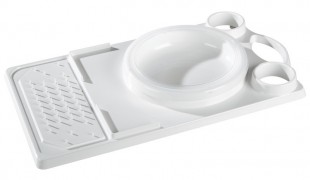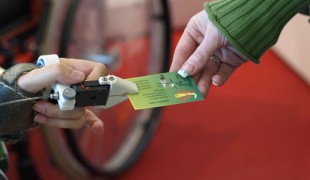- 6019
- 446
- 5
- 2
- 0
- Help Ukraine
About the solution
It all started when the artist was pregnant with her second child. Lee knew that newborns commanded a lot of time and that if she could get her eldest daughter to eat independently, it would free up more of the precious resource.
She started creating food art to help her eldest daughter eat independently back in 2008 and started posting on Instagram in 2011.
Now Samantha has a growing following of more than half a million on Instagram thanks to her creative and unique way of approaching mealtimes.
Samantha’s approach is fuss free and imaginative, using simple tools to create her food artworks. She doesn’t believe in wasting food and is a strong believer of utilising fresh and healthy ingredients.
Not only are Lee’s food artworks wildly creative, but they are also homemade and healthy.
She says that, while her kids love how cute and creative the food is, they have no problem eating it. Instead, they like to make up stories about their food as they feast.
“I've never been to any cooking class or training before. I'm a very ordinary stay (at) home mom,” Lee, who lives in Malaysia, told TODAY Moms. I didn't expect it to grow so much. I'm thankful for what is happening to me at the moment.”
Lee usually uses rice, bread, vegetables and fruits as the basic building blocks, adding other touches depending on the dish. Fresh ingredients are key because they’re colorful and make the food look more appetizing, Lee said.
More info: http://www.leesamantha.com/
https://www.facebook.com/iamleesamantha/
Adapted from: http://twistedsifter.com/2014/09/lee-samantha-food-art/
https://www.youtube.com/watch?v=rdY9kpBEQ1I
This solution shall not include mention to the use of drugs, chemicals or biologicals (including food); invasive devices; offensive, commercial or inherently dangerous content. This solution was not medically validated. Proceed with caution! If you have any doubts, please consult with a health professional.
-
-
828
-
2
-
20036

Woman invents tray to help amputees eating with no help
Cooking
(SELF)-CARE: EATING: Eating independently.
Limb Amputation
Limb Deformity
Assistive Daily Life Device (to help ADL)
Muscle weakness
Limited range of motion
Muscle pain or stiffness
Loss of muscle coordination
Muscle cramps or spasms
Muscle twitching
Restoring mobility
Promoting self-management
General and Family Medicine
Orthopedics
France
-
-
-
703
-
0
-
17715

Glove to help control tremors
Grip
(SELF)-CARE: EATING: Eating independently.
(SELF)-CARE: DRINKING: Drinking independently.
Parkinson's Disease
Assistive Daily Life Device (to help ADL)
Body-Worn solutions (Clothing, accessories, shoes, sensors...)
Gait abnormalities (e.g., walking difficulties, unsteady gait)
Tremors
Muscle cramps or spasms
Difficulty coordinating movements
Muscle weakness
Cognitive impairment
Restoring mobility
Promoting self-management
Managing Neurological Disorders
Caregiving Support
Neurology
United Kingdom
-
-
-
796
-
0
-
15780

Aids for limited hand function
Grip
(SELF)-CARE: EATING: Eating independently.
(SELF)-CARE: DRINKING: Drinking independently.
Paralysis
Spinal Cord and Nerve Root Disorders
Cervical spinal cord injury/Tetraplegia
Assistive Daily Life Device (to help ADL)
Assistive Technology access
Difficulty coordinating movements
Stiffness or rigidity (difficulty moving)
Paralysis of the legs and lower body
Muscle weakness
Loss of balance
Restoring mobility
Managing Neurological Disorders
Recovering from Traumatic Injuries
Maintaining Balance and Mobility
Neurology
Germany
-
 en
en